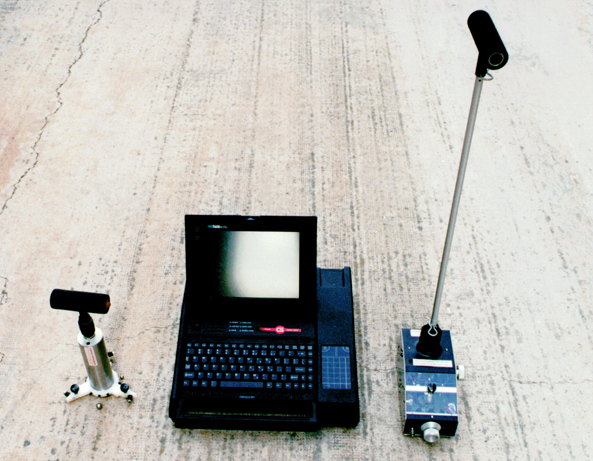In the Impact-Echo Test (IET) method small metal spheres are used to provoke a mechanical impact at a point on the surface of the concrete structure to be tested (beam, slab, tunnel lining, etc).
This causes a pulse which moves through the interior of the concrete in the form of compression waves, shear waves and surface waves. The waves extending through the interior of the structure are reflected back off any cracks, voids and changes in layers (changes in impedance).
The system comprises three elements:- Low-frequency impact mechanism (metal spheres).
- Piezoelectric movement sensor.
- Laptop with data acquisition card.

IET is both highly precise and non-destructive, so its applications are many and varied (acoustic analysis of beams, slabs, walls, concrete pavements, tunnel linings, etc).
The difference between IET and other sensor-based echo techniques is that it uses short-duration mechanical impacts which generate waves which can propagate and may be reflected several times in concrete structure has several metres thick.
Euroconsult has used this method in the following building and civil engineering applications:
- Measuring aggregate thickness in concrete slabs.
- Post-stressing cable insertion monitoring.
- Acoustic analysis of slabs, piles and beams on bridges.
- Monitoring of prefabricated and in situ concrete linings for tunnels.







